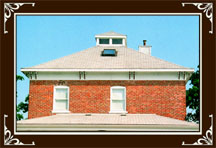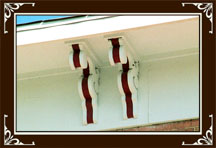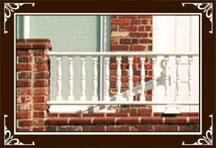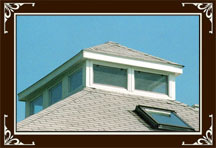The Architecture of McCord's Place
McCord's Place is built in the Italianate style of architecture, which was popular between 1840 and 1885. This style of architecture was developed in England in the 1940's and was inspired by Renaissance style architecture. When Italianate architecture reached America around the 1950's, it was most popular in the Midwest. The American interpretation of Italianate is slightly different than what you would encounter in England, but the features of this style are fundamentally the same in both countries. Common to Italianate are:
Multi-storied:
Most Italianate buildings are two or more stories high.
Low Pitched roofs:
A roof with a slight incline. This is used to give the building a higher appearance.

Bracketed Cornice:
Decorative Molding combined with weight bearing brackets.

Balustrade Balcony:
A balcony featuring a row of posts which function to hold up the upper rail of the railing.

Arcade Porch:
A hollow, arched porch.
Cornices:
Decorative molding found below the eaves but at the top of the wall.
Eaves:
The edge of the roof which typically projects out from the walls.
Cupola:
A small tower located in the center of the roof.

Pendants:
Ornamentation on the roof.
Typical building materials for Italianate Houses were clap board or brick for the exteriors and metal, cedar, or asphalt shingles for the roof. The typical windows are narrow and vertical format.
The McCord house possesses some of these architectural features. It is two stories high and features a low pitch roof which is almost completely blocked from view at ground level. The house features a cupola. The building materials used for the McCord house include a brick exterior, etc.